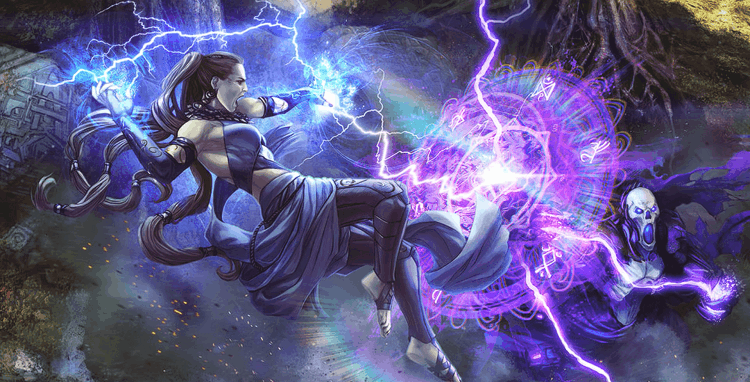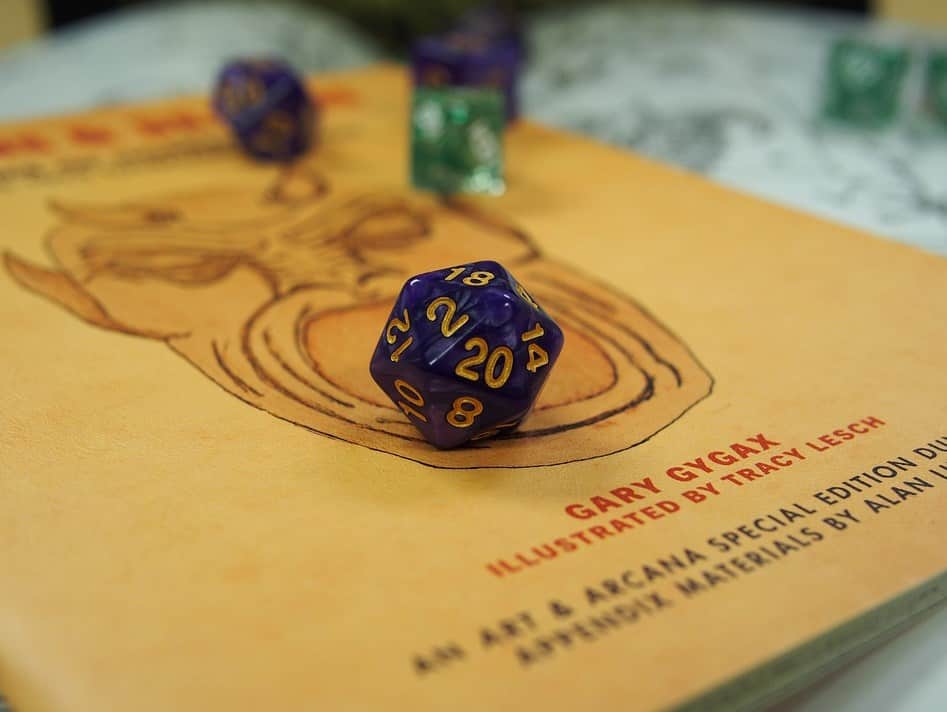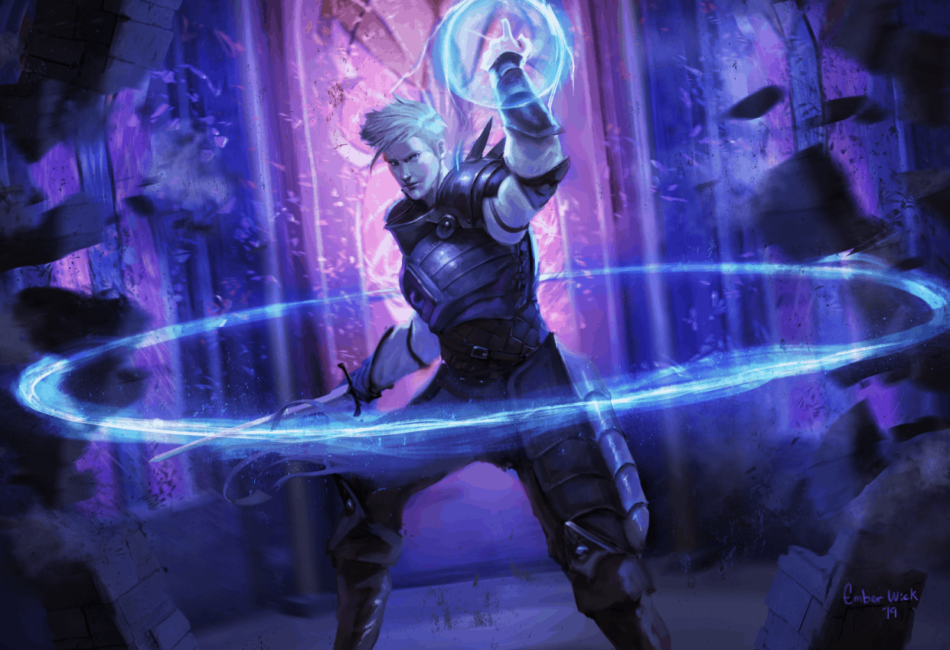Who doesn’t like to make some noise while playing D&D? Well, with the shatter spell you can do just that! This spell allows your character to weaponize sound like a spell, and it might even cause more damage than just burst eardrums. It’s a pretty fun D&D spell to play with, and with a little creative homebrewing it can be even more fun.
If you want to start shattering things in 5e, make sure to start reading our Shatter 5e Guide to this spell!
What Is The Shatter Spell?
According to the Player’s Handbook, here are the stats for the shatter spell:
- Shatter
- 2nd level evocation
- Casting Time: 1 action
- Range: 60 feet
- Components: V S M (A chip of mica)
- Duration: Instantaneous
- Classes: Bard, Sorcerer, Warlock, Wizard
A sudden loud ringing noise, painfully intense, erupts from a point of your choice within range. Each creature in a 10-foot-radius sphere centered on that point must make a Constitution saving throw. A creature takes 3d8 thunder damage on a failed save, or half as much damage on a successful one. A creature made of inorganic material such as stone, crystal, or metal has a disadvantage on this saving throw. A nonmagical object that isn’t being worn or carried also takes the damage if it’s in the spell’s area.
At Higher Levels: When you cast this spell using a spell slot of or higher, the damage increases by 1d8 for each slot level above 2nd

Let’s break the shattered spell down and see how useful it is. First, it is a second-level evocation spell that requires a 2nd level spell slot. It requires a vocal, somatic, and material component to be cast, and is instantaneous when it is cast. A Bard, Sorcerer, Warlock, and a Wizard can all use this spell.
When it is cast, you choose a point within 60 feet, and from that point, a loud noise erupts. Any creature within 10 feet from the point will need to make a constitution saving throw. If they fail, they take 3d8 thunder damage or half the damage on a successful save.
It seems like a pretty standard damage-causing spell, but whenever you read a bit further you can see two very interesting and potentially game-changing effects.
The Effects Of Being Shattered
If you use the shattered spell on any stone, crystal, or metal creatures, they have a disadvantage on the saving throw to resist the damage. Also, any nonmagical items that aren’t worn or carried also take damage from the thunderclap. Both of these added effects really can change the way that you approach certain encounters.
For one thing, if your party finds itself fighting a golem or other stone creature, they tend to have a lot of damage resistance to traditional forms of damage. In fact, the golem’s stat block states that it has magic resistance to spells and is also immune to bludgeoning, piercing, and slashing damage from weapons that are not made of adamantine or are magical. Crystal and other inorganic material is very much the same way.
However, shattered spells allow you to overcome the innate damage resistance of a golem, and allows you to do a lot of damage, especially with a higher-level spell slot. This can help turn the tide of battle if you are facing some inorganic enemies.
The other interesting effect is that non-magical items take damage as well if they are within the ten-foot bubble. While this can help to destroy terrain to increase speed and deny the enemy’s cover, you can also use the spell to shatter things like doors and other locked obstacles, or at least damage them enough for physical damage to provide the finishing touches to breakthrough. If you don’t have a key, it’s the next best thing!
Read also: Comprehensive Thunderclap 5e Guide.
Who Can Use Shatter?
The Bard, sorcerer, warlock, and wizard can use the shatter spell once they get to the second level, and it’s a pretty good spell right off the bat for them. All of these characters are backline fighters, so being able to cast the spell as quickly as possible to damage enemies before the front-line fighters get super close is something that they need to keep in mind.
How Loud Is Shatter?
We will be doing a more in-depth comparison of shatter and thunderclap a bit later in the article, but shatter doesn’t tell you how loud the sound you create is. The way that most players interpret the spell is that it is very loud in the ten-foot radius that the spell encompasses. However, it is muffled outside of that sphere.
If you use shatter to break objects, then the sound of those objects cracking into pieces and falling onto the floor will certainly make a sound. In this case, shatter’s effect can be very loud. Thunderclap is a little different, as the spell states: You create a burst of thunderous sound that can be heard 100 feet away.
Both spells are very loud, but Thunderclap is certainly much louder for everyone. Shatter’s piercing noise can only be truly heard whenever you are within the ten-foot radius.
Creative Ways To Use Shatter

Of course, there’s a ton of creative ways to use shatter when it comes to the damage you can do to inorganic objects. For starters, you can use a high-level command spell and order everyone to drop their weapons in a single word. Then follow that up with a shatter spell and watch their weapons become a lot less durable, and they might even get destroyed outright!
A shatter spell might even disintegrate the support beams of a building as well, bringing it down on top of everyone inside. You could even start a rockslide to bring a chunk of debris down. Of course, shatter can also be used to break doors, locks, and other durable items that your party can’t bash through.
It is one of those spells that can be used in both combat and non-combat situations, and if you are a flexible DM you will be able to take advantage of your players using those spells whenever they feel the need to.
What Is Mica?
The material component for the Shatter spell is ‘a chip of mica.’ Mica is a gemstone that has a pearly luster, and it can have up to 34 layers. It has been found in various places around the world and was once even mined for export and trading. The stone itself isn’t very durable, and is often found in powder form and is used as an accent in jewelry
It is also pretty common and found on all continents in the real world, and it’s pretty cheap if you are looking for a lot of low-quality mica. It flakes off into sheets very easily, so one large mica rock can flake off in dozens of chips, and the chip is not consumed when casting the spell.
So, if your players are looking for Mica and you want to mirror the real world, it should be very easy to find and pretty cheap. There should also be an abundance of it in mining towns. They can easily store a chip in their regents’ pouch and never have to worry about it again.
Shatter vs Thunderclap

Both of these are very good spells to use, and both of them deal with sound. Thunderclap has a much louder sound as we’ve discussed above, and according to Xanathar’s Guide To Everything the stats are as follows:
You create a burst of thunderous sound that can be heard up to 100 feet away. Each creature within range, other than you, must succeed on a Constitution saving throw or take 1d6 thunder damage.
The spell’s damage increases by 1d6 when you reach the 5th level (2d6), 11th level (3d6), and 17th level (4d6).
Thunderclap has a few disadvantages when it comes to shatter. For starters, most tough monsters have high constitution saves, so they will be able to weather the blow. If they pass the save, then they do not take any damage. Additionally, you have a 5ft range on the spell, while shatter is much more versatile at a 60ft range.
You also have 1d6 thunder damage vs 3d8 thunder damage at the first level, so damage-wise shatter is a much better spell. All this being said, thunderclap has a few out-of-game advantages, if you want to create a signal for your party by having the sounds of thunder on a cloudy day.
However, while thunderclap can be an interesting cantrip, shatter blows it out of the water in everything but sound. Once you hit the second level, give it a go and soon you’ll be replacing thunderclap for it!
Shatter 5e FAQ’s
Question: Does The Target Need To Hear Me?
Answer: Since shatter focuses on creating a loud and piercing sound at its point of origin, a lot of players and DM’s think that the targets affected by the spell need to be able to hear them. However, the ability to hear does disqualify golems and other constructs because they do not hear.
If you keep reading the spell you will see that the thunder damage is the main damage dealer for the shatter spell, so as long as they can feel the effects of the shatter spell, they will take damage. They might react to the sound and clutch their ears before the shatter damage happens, but will otherwise need to deal with the thunder damage of the attack other than the sound.
Question: Does Shatter Damage Items Inside Of Chests?
Answer: Something players might decide to do is use shatter on a chest that they can’t get open, especially if it is locked. However, the shatter spell isn’t able to be made smaller, so you are still limited by the 10-foot radius. The 3d8 thunder damage is probably enough to shatter the chest as many chests in 5e have about 15 AC if they are made of wood, and 19 AC if they are made of Iron or Steel.
Now, they all will have about 10 hp so 3d8 is almost always going to break them, but what about what is inside? You could rule that any excess damage from the shatter spell goes into the items, potentially lowering their value, durability, and even shattering some fragile items like glass potion bottles or vials.
Even if regular and more durable items like armor can withstand the blow, make it clear as a DM that their value is tarnished because they have been damaged by the debris from the chest and the thunder attack. If this happens enough times you will see your players start to turn to their rouge for chest opening because the shatter spell is just too powerful.
Question: Where Would You Find Inorganic Creatures?
Answer: For shatter to be at its most effective, you would need to use them against inorganic creatures made from non-living material. Most of these are golems and elementals if your DM rules that way, and you will most likely find these creatures serving wizards and other characters that could use magic to control them.
Clockwork soldiers can also be classified as inorganic if you want to overcome them quickly, as are other machines made from metal. Gargoyles made from the stone would also be at a disadvantage with this spell.
For the most part, you aren’t going to be running into these creatures in random encounters or in every single room of a dungeon. However, you will find them in specific environments. Clockwork soldiers will be found in clockwork dungeons, golems will be found in wizards or alchemist labs, and crystal monsters will likely be found in places with a bunch of crystals.
So if you know you are going into a place where these creatures are likely to be, then you can prep the shatter spell for a confrontation. Otherwise, you can be confident that you won’t be running into these creatures on the street.
- DnD Demons Guide: What Are Demons in 5e? - September 18, 2021
- Detect Thoughts 5e Guide: When, Why and How to Use It - September 9, 2021
- The Ultimate DnD Toll the Dead 5e Guide - September 9, 2021

